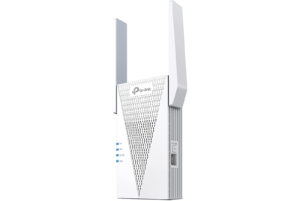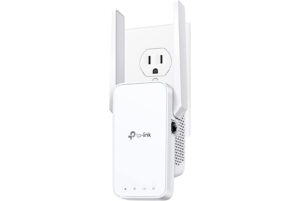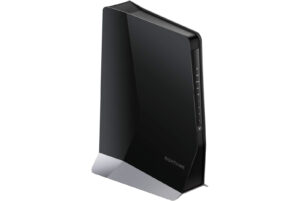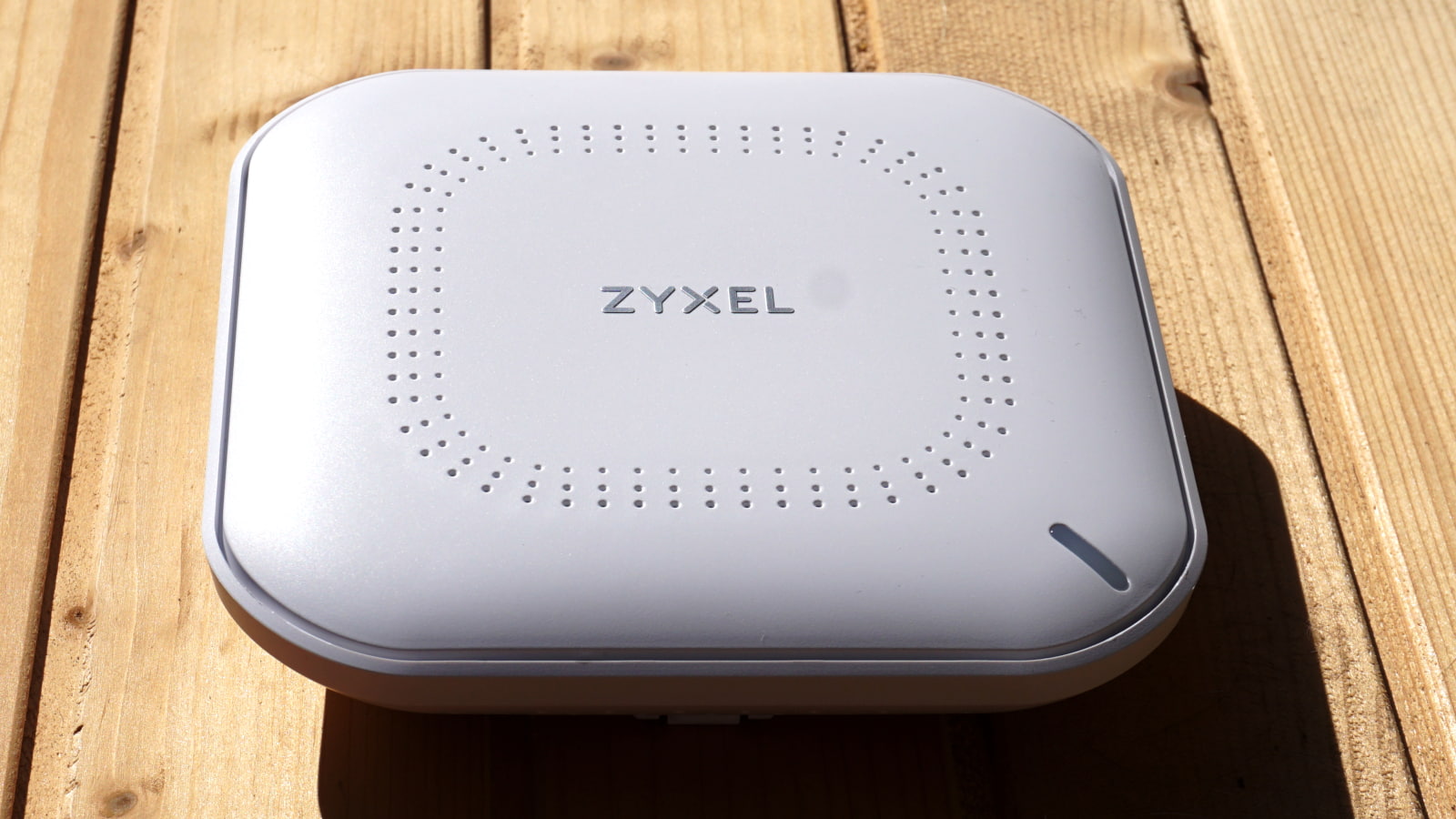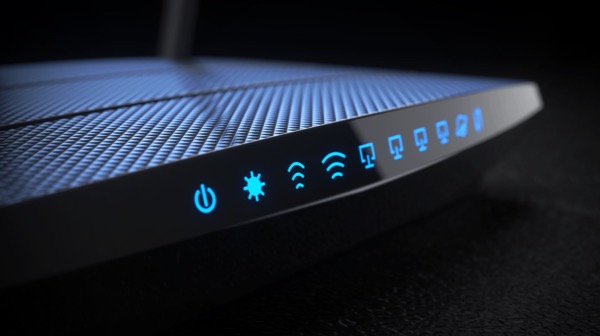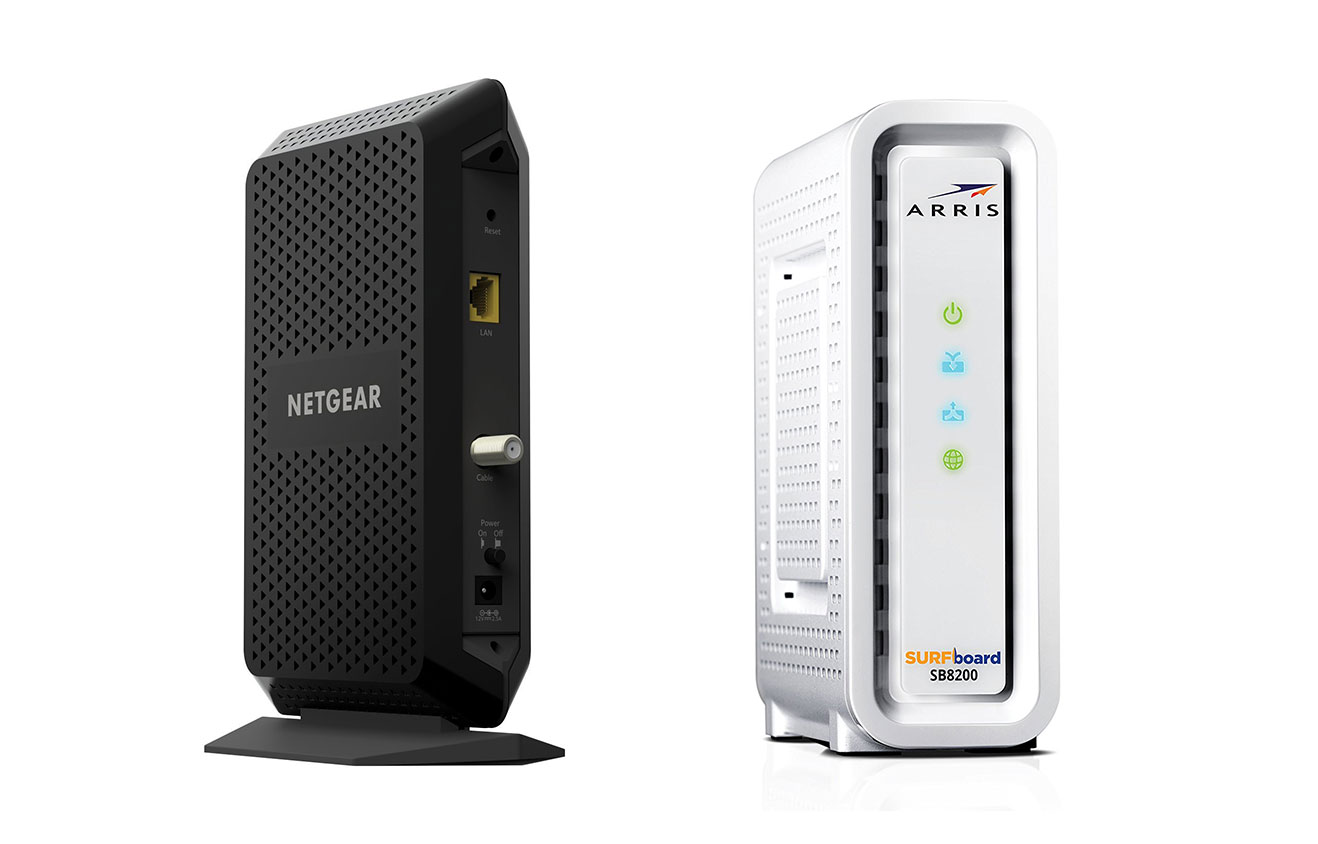Best Wi-Fi Extenders 2024
Clear out those annoying dead zones with one of the best Wi-Fi extenders you can get.
Dec 15, 2023 | Share
Equipment Guides, Internet Speed Guides
-
Best overallTP-Link RE715X
- $104.99
- Standard: Wi-Fi 6
- Max throughput: 3,000Mbps
-
Best for budgetsTP-Link RE315
- $29.99
- Standard: Wi-Fi 5
- Max throughput: 1,200Mbps
-
Best for speedNETGEAR Nighthawk EAX80
- $219.77
- Standard: Wi-Fi 6
- Max throughput: 6,000Mbps
Amazon.com prices (as of 12/15/23 12:12 MST). Read full disclaimer.
Our pick: Which Wi-Fi extender is best?
Let’s get real here. Comparing Wi-Fi extenders isn’t like comparing shiny new cars. They’re boring little devices that rarely have anything unique to make them stand out against the competition. You can spend hours trying to figure out which is the best Wi-Fi extender for your network and still come out frustrated and empty-handed. But here’s our verdict: the TP-Link RE715 is a solid choice for its speed and price, and you can take that to the bank.
Does your internet plan match your Wi-Fi network's potential speed?
Use our speed test to determine your plan’s current speed, and then enter your zip code below to find a better plan.
5 best Wi-Fi extenders
- Best overall: TP-Link RE715X
- Best for budgets: TP-Link RE315
- Best for speed: NETGEAR Nighthawk EAX80
- Best for range: Linksys RE9000
- Best for Wi-Fi 5: TP-Link RE550
Compare Wi-Fi extender features and prices
| Model | Standard | Max throughput | Price* | Get it | |
|---|---|---|---|---|---|
| Best overall | TP-Link RE715X | Wi-Fi 6 | 3,000Mbps | $104.99 | View on Amazon |
| Best for budgets | TP-Link RE315 | Wi-Fi 5 | 1,200Mbps | $29.99 | View on Amazon |
| Best for speed | NETGEAR EAX80 | Wi-Fi 6 | 6,000Mbps | $219.77 | View on Amazon |
| Best for range | Linksys RE9000 | Wi-Fi 5 | 3,000Mbps | $89.99 | View on Amazon |
| Best for Wi-Fi 5 | TP-Link RE550 | Wi-Fi 5 | 1,900Mbps | $59.99 | View on Amazon |
Amazon.com prices (as of 12/15/23 12:12 MST). Read full disclaimer.
What should you look for in a Wi-Fi extender?
First, look for an extender with Wi-Fi 6. It’s the current most common standard used in modern devices and is slightly faster than Wi-Fi 5.
Second, look for a decent throughput. The number shows the maximum amount of data the extender pushes across all bands at once.
Finally, look for range. Most wall-mounted extenders can’t blast coverage, but some extenders are built like mini routers to hammer Wi-Fi signals through furniture and walls with ease.
Best overall—TP-Link RE715X
$104.99*
Specs:
- Standard: Wi-Fi 6
- Max throughput: 3,000Mbps
- Streams: 4 x 4
- 2.4 GHz band: 574Mbps
- 5 GHz band: 2,402Mbps
- Range: 1,500 sq. ft.
- Ports: 1x Gigabit Ethernet
* Amazon.com price (as of 12/15/23 12:12 MST). Read full disclaimer.
We had a hard time selecting the RE715X as our top pick because we love the RE550 too. The latter is a Wi-Fi 5 extender with a better range and device capacity, and we wouldn’t blame you for picking it over the more expensive RE715X. But the Wi-Fi 5 spec translates to slower speeds, so go with the RE715X if you want a higher throughput.
But here’s the thing. The 5 GHz band splits into two streams of up to 1,200Mbps each. You need a device supporting 160 MHz channels to get those speeds, like a Wi-Fi 6 laptop. Many popular Wi-Fi 6 smartphones support 80 MHz channels only, so your maximum rate is halved to 600Mbps for each stream (1,200Mbps total).
The RE715X is a socket-mounted extender, so don’t expect an insane amount of range like a few others on our list. But there are some callouts to be had here, including OneMesh support and the built-in access point mode. Go with this extender if you have a TP-Link router with OneMesh technology.
 Pros:
Pros:
- 160 MHz channel support
- OneMesh compatibility
 Cons:
Cons:
- Limited range
- Limited stream count
Best for budgets—TP-Link RE315
$29.99*
Specs:
- Standard: Wi-Fi 5
- Max throughput: 1,200Mbps
- Streams: 4 x 4
- 2.4 GHz band: 300Mbps
- 5 GHz band: 866Mbps
- Range: 1,500 sq. ft.
- Ports: 1x Fast Ethernet
* Amazon.com price (as of 12/15/23 12:12 MST). Read full disclaimer.
At its core, the RE315 is a slower version of the RE715X. Both plug into a power outlet, have two antennas, and broadcast two streams per wireless band. The only real difference outside price is speed: An 866Mbps max rate with the RE315 versus the 2,402Mbps max rate with the RE715X.
As with the RE715X, you can connect the RE315 to your router and set it to Access Point mode—we talk about this in our FAQ. It also supports TP-Link’s OneMesh technology, but you need a compatible TP-Link router to create a mesh network.
Lastly, the extender has Adaptive Path Selection. This technology selects the best band and route for your data and changes the path and band if the data loss between your device and the extender gets too high.
 Pros:
Pros:
- OneMesh compatibility
- AP mode support
 Cons:
Cons:
- Slower Wi-Fi 5 speeds
- Slower wired speeds
Best for speed—NETGEAR Nighthawk EAX80
$219.77*
Specs:
- Standard: Wi-Fi 6
- Max throughput: 6,000Mbps
- Streams: 8 x 8
- 2.4 GHz band: 1,200Mbps
- 5 GHz band: 4,800Mbps
- Range: 2,500 sq. ft.
- Ports: 4x Gigabit Ethernet; 1x USB-A 3.2
* Amazon.com price (as of 12/15/23 12:12 MST). Read full disclaimer.
The EAX80 is a standalone Wi-Fi extender that looks like a router. NETGEAR calls it a “mesh extender,” but the specs show it supports the 802.11k standard only, which allows compatible devices to switch to a connection with the strongest signal automatically. Devices such as routers, smartphones, tablets, and so on must support this standard for smart roaming.
As the specs show, you can get a 4,800Mbps link rate if you have a Wi-Fi 6 laptop supporting four streams and 160 MHz channels. Otherwise, two iPhone 14 phones connect at 1,200Mbps each. The extender uses some of that bandwidth as the backhaul to the router unless you tether it with an Ethernet cable, which we suggest if you want to get the most out of the other Gigabit Ethernet ports.
The range tradeoff for speed is the big callout with this extender compared to the Linksys RE9000. The EAX80 has the third-best range on this list, so you’re essentially paying for more speed and the added USB-A port.
 Pros:
Pros:
- Great range
- Multiple Ethernet ports
 Cons:
Cons:
- High price
- Limited mesh support
Best for range—Linksys RE9000
$89.99*
Specs:
- Standard: Wi-Fi 5
- Max throughput: 3,000Mbps
- Streams: 8 x 8
- 2.4 GHz band: 400Mbps
- 5 GHz band 1: 866Mbps
- 5 GHz band 2: 1,733Mbps
- Range: 10,000 sq. ft.
- Ports: 4x Gigabit Ethernet
* Amazon.com price (as of 12/15/23 12:12 MST). Read full disclaimer.
Like the NETGEAR Nighthawk EAX80, the Linksys RE9000 resembles a router—even more so than the NETGEAR model. It has an extra 5 GHz band to support your wireless devices better, but the most you’ll see is 3,000Mbps across all three bands versus 6,000Mbps across the EAX80’s two bands.
But that’s okay. This flipped tarantula targets range over speed, with a maximum coverage of 10,000 square feet. To put that number into perspective, the Linksys MR9000 router has a range of up to 3,000 square feet.
Other notable features include four Gigabit Ethernet ports, one of which you can use as a dedicated wired backhaul to the router. It supports seamless roaming, too, if you pair this extender with a Linksys Max-Stream router and other compatible extenders.
 Pros:
Pros:
- Best range
- Three bands
 Cons:
Cons:
- Slower Wi-Fi 5 speeds
- No USB connectivity
Best for Wi-Fi 5—TP-Link RE550
$59.99*
Specs:
- Standard: Wi-Fi 5
- Max throughput: 1,900Mbps
- Streams: 6 x 6
- 2.4 GHz band: 600Mbps
- 5 GHz band: 1,300Mbps
- Range: 2,800 sq. ft.
- Ports: 1x Gigabit Ethernet
* Amazon.com price (as of 12/15/23 12:12 MST). Read full disclaimer.
The TP-Link RE550 has a weird configuration, but we like it nonetheless—it’s a great runner-up to our pick for the best overall Wi-Fi extender. The big takeaway is you get a far better range than the RE715X at a lower price, but you don’t get the speed or capacity of the newer TP-Link Wi-Fi 6 model.
We call the configuration weird because we generally see an even number of streams broadcast over each band, like two and four. Laptops and smartphones almost always support two down and two up (2×2), so your maximum link rate on a Pixel 3 is 866Mbps.
The RE550 has the second-best range on the list, thanks to three amplified antennas. It’s a socket-mounted unit, so its overall design limits its port count to a single Gigabit Ethernet jack. It works with TP-Link’s OneMesh technology, but you need a compatible TP-Link router to get the mesh benefits.
 Pros:
Pros:
- Good range
- OneMesh support
 Cons:
Cons:
- Slower Wi-Fi 5 speeds
- No USB connectivity
Wi-Fi extender specs and features
Here we’ll dive a little deeper into what you should look for in a Wi-Fi extender.
Wi-Fi 6
Wi-Fi 6 is the most common standard used today on modern routers, smartphones, tablets, laptops, and other devices. It’s slightly faster than Wi-Fi 5 and supports more devices. We suggest Wi-Fi 5 only if you have an older router or if the extender’s overall design is better than similarly priced Wi-Fi 6 models.
Range
Most of the routers we’ve tested push decent speeds at 120 feet. But some lower-priced models need an extra push from a Wi-Fi extender or two, especially if walls and furniture are an issue. A high range helps to deliver data where your router can’t. All manufacturers list ranges in square feet, but that’s hard to decipher since we don’t know the length and width they use to determine the range.
Throughput
You want high throughput. The number dictates the amount of data an extender can push in one second across all bands. For example, a 6,000Mbps throughput may translate to 1,200Mbps on the 2.4 GHz band and 4,800Mbps on the 5 GHz band. That’s a good throughput versus 1,200Mbps.
Our verdict
We’re still on the fence about which Wi-Fi extender is really better: TP-Link’s RE715X or the RE550. The RE715X has a higher throughput at a higher cost, but the RE550 has a better range at a lower cost.
Go with the RE715X if you have Wi-Fi 6 devices, and range isn’t a show-stopping issue. Go with the RE550 if you still have a Wi-Fi 5 router and need a lot more range than the RE715X can provide.
Of course, the other picks on our list are great choices too. Go with the Linksys RE9000 or NETGEAR Nighthawk EAX80 for better device capacity and expanded Gigabit Ethernet connectivity.
FAQ about Wi-Fi extenders
Do Wi-Fi extenders really work?
Wi-Fi extenders work well when you need better signal strength. Radio waves weaken over distance, leading to lower speeds as you move away from the router. A well-positioned extender provides a strong complementary connection but doesn’t increase your speed.
Where should I place a Wi-Fi extender?
For the best performance, place a Wi-Fi extender with external antennas up to 40 feet away from the router. Place a Wi-Fi extender with internal antennas up to 35 feet away from the router.
What do “AC1900” and similar labels mean?
Letters signify a Wi-Fi standard. For instance, the “AC” in AC1900 means the router is based on Wireless AC (Wi-Fi 5). The number indicates the router’s maximum throughput across all bands. In this case, 600Mbps on the 2.4 GHz band and 1,300Mbps on the 5 GHz band.
Extender vs. repeater vs. booster: What’s the difference?
All three terms apply to the same thing: a standalone device for capturing your network signals and sending them into areas your router can’t reach. Most Wi-Fi extenders now have two modes you can toggle from the bottom or the side: repeat and extend. We’ll explain both modes and how an extender can boost your Wi-Fi.
Repeater
By default, an extender connects to your router using Wi-Fi. To set it up, press the WPS button or log in to your Wi-Fi network through the repeater’s app or web interface. It then captures and repeats your router’s Wi-Fi through amplified antennas, so you don’t need to manually disconnect and reconnect as you roam. But your data throughput doesn’t increase in speed because there’s no wired connection to the router.
Extender (access point)
With the access point mode enabled, the extender connects to your router using Wi-Fi, an Ethernet cable, or a coax cable. It creates a new Wi-Fi network, so you must manually connect your wireless devices upon first use—they reconnect when you move outside the router’s range. This mode has the fastest data throughput if you use a wired connection, but it ties up the Ethernet port.
Booster
This term applies to all Wi-Fi extenders because they “boost” your Wi-Fi range. Extenders have amplified antennas, so if you get a -80 dBm signal from your router while standing next to the bookcase, a Wi-Fi extender in that spot may broadcast a -38 dBm signal, which is far better—the closer to zero, the stronger the signal. What extenders can’t do is increase your data speed unless it’s wired to the router.
What if an extender doesn’t solve my Wi-Fi issues?
Aside from grabbing a Wi-Fi extender, you can take a few other steps to boost your Wi-Fi signal strength. Be sure to check out our guide on how to improve your Wi-Fi speed in 10 simple steps.
Product prices and availability are accurate as of the date/time indicated and are subject to change. Any price and availability information displayed on Amazon.com at the time of purchase will apply to the purchase of this product. HighSpeedInternet.com utilizes paid Amazon links.
CERTAIN CONTENT THAT APPEARS ON THIS SITE COMES FROM AMAZON. THIS CONTENT IS PROVIDED ‘AS IS’ AND IS SUBJECT TO CHANGE OR REMOVAL AT ANY TIME.
Author - Kevin Parrish
Kevin Parrish has more than a decade of experience working as a writer, editor, and product tester. He began writing about computer hardware and soon branched out to other devices and services such as networking equipment, phones and tablets, game consoles, and other internet-connected devices. His work has appeared in Tom’s Hardware, Tom's Guide, Maximum PC, Digital Trends, Android Authority, How-To Geek, Lifewire, and others. At HighSpeedInternet.com, he focuses on network equipment testing and review.
Editor - Cara Haynes
Cara Haynes has been editing and writing in the digital space for seven years, and she's edited all things internet for HighSpeedInternet.com for five years. She graduated with a BA in English and a minor in editing from Brigham Young University. When she's not editing, she makes tech accessible through her freelance writing for brands like Pluralsight. She believes no one should feel lost in internet land and that a good internet connection significantly extends your life span.
